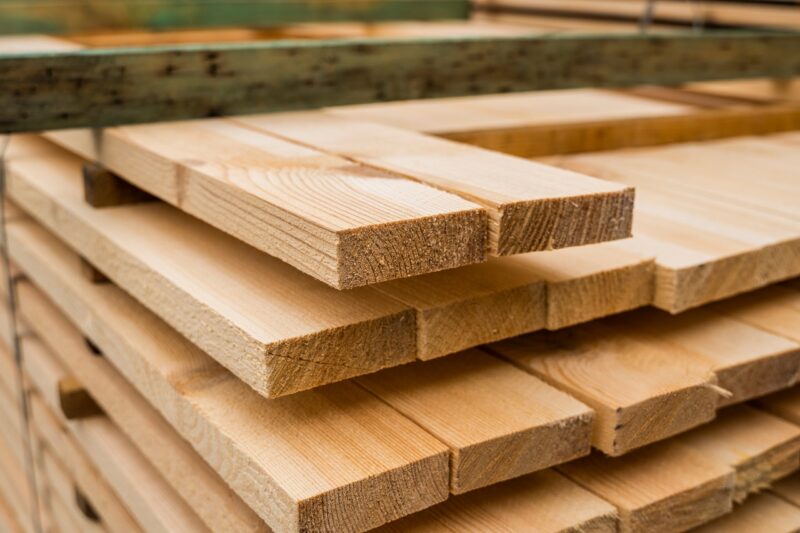Published: 19/03/25 By: Mike Bekin
How do you choose the right timber for your construction project? Our advice would be to start with strength classes and grading. These define mechanical properties and give you a clear idea of how suitable that specific timber will be for your end application, helping you select the right timber species and boards for your project.
Start getting to grips with timber strength classes and grading in this quick guide.
What Are Timber Strength Classes?
The European system groups timber into strength classes for softwoods and hardwoods:
- Softwoods (C classes): These include grades like C14, C16, C24. The “C” refers to coniferous species, otherwise known as softwoods.
- Hardwoods (D classes): These include grades such as D30, D50, and D70. The “D” stands for deciduous species, otherwise known as hardwoods.
The numbers in each class (e.g. the 16 in C16) represent the characteristic bending strength in megapascals (MPa). For instance, C16 softwood timber has a bending strength of 16 MPa, while C24 timber has 24 MPa, making it stronger and more suitable for load-bearing applications.
Do note that the numbers do not indicate the same strength in softwoods and hardwoods. The strength of C24 would be different to the equivalent D24, for example.
Key Properties of Strength Classes
Here at EcoChoice, we are suckers for standards. That is why when looking at the properties of strength classes, we refer to the European standard BS EN 338, which defines the characteristic properties of timber. This includes:
- Bending Strength: A measure of how much force timber can withstand before bending.
- Density: Influences the timber’s weight and overall stability.
- Modulus of Elasticity: Determines the stiffness of timber and its resistance to being bent and deformed.
Each property is tested on a representative sample of a timber species to calculate the strength class of the batch. For example, C16 timber must meet a minimum density of 310 kg/m³, a bending strength of 16 MPa, and a modulus of elasticity of 8 GPa.
Grading Timber for Structural Use
We speak quite a lot about grading timber, but it is for a good reason! Grading your timber boards ensures they will be suitable for your planned construction projects, from decking to footbridges.
There are two main methods of grading timber. These are:
- Visual Stress Grading: Inspectors evaluate visible characteristics such as knots, grain slope and growth rate. Standards – such as BS 4978 for softwoods and BS 5756 for hardwoods – guide them on the appropriate level of these features. Timber which has been graded this way can be assigned to strength classes based on its species and source.
- Machine Stress Grading: This method uses machines rather than visual inspectors to test timber automatically. It measures properties such as bending stiffness using a wide variety of tech-based techniques, including vibrations and ultrasounds. It is a super precise way of grading, and these tech-based techniques can be combined with visual scanners to identify knots and assess the grain.
Why Are Strength Classes and Grades Important?
By knowing the strength class and grade of timber, we know more about its suitability for different applications. When clients come to us asking to be matched with suitable timber, they help us weigh up safety, performance and cost to make quick and accurate decisions.
For example, if a timber falls under the strength class of C16, we know not to recommend it for any load-bearing applications. An engineer will specify the correct required grading for the job at hand, be that C24 or, in extreme cases, D70!
Find the Right Timber at EcoChoice
Strength classes and grading are professional methods of choosing the right timber. If you have not got time to research what each letter and number means, there is no need to worry; that is where we come in.
At EcoChoice, our timber experts will use their knowledge to match you with the ideal timber species, grade and strength class. It could not be simpler! Get in touch today to find your perfect timber products.
Tags: Timber grading, timber strength
Categories: Insights
